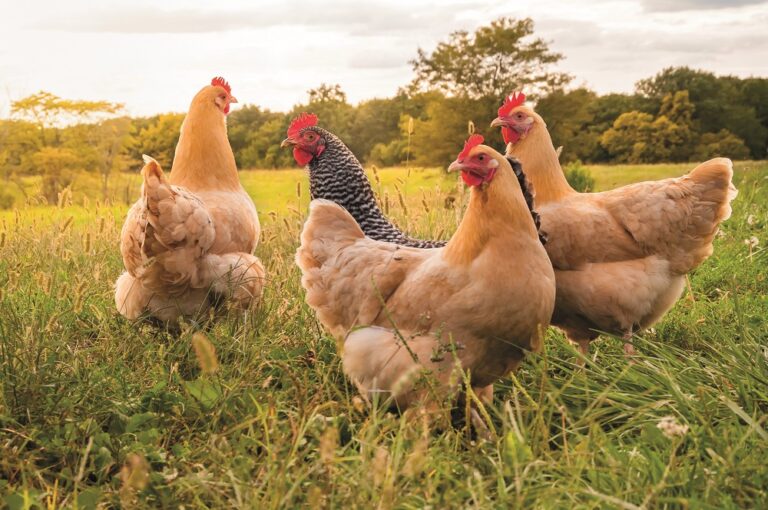By ForFarmers’ national poultry advisor Andrew Fothergill
There has been much debate in recent times over the subject of extended cycles for commercial laying hens. The geneticists have undoubtedly provided the opportunity, whereas the laying industry has potentially not felt confident to adopt this practice.
However, most of the preparations that are needed to successfully take a flock beyond the conventional 72/76 weeks of age, will pay handsome dividends in any case. Let’s consider what is required to take a flock to a longer age in lay.
A well-managed rear – birds grown to their advised growth profile, according to their genetics, in a house with the necessary enrichments to prepare for their laying house, with all necessary vaccinations and veterinary health plan adhered to.
If a pullet is delivered at her advised bodyweight at transfer and has largely achieved growth targets through a relatively uneventful rear she should be capable of persisting in lay beyond 76 weeks.
Knowledge of the pullets rearing history is always helpful, as is being involved in the veterinary health plan to address any known laying challenges.
A smooth transfer and a way of measuring the speed of how the birds adapt to their new environment is useful – for example, knowledge of the bird’s water consumption on the rearing site, and how quickly this consumption is restored after their move, can be an indicator of how quickly the birds settle.
Pullets should be transferred ideally four weeks prior to onset of lay – typically at around sixteen weeks of age – and never less than two weeks before first egg. They should transfer onto a pre-breeder or layer diet, with the layer diet ideally being consumed prior to the onset of lay, and certainly before 2% flock production. This is all pretty basic stuff, I hear – and it is!
Specifically, from here onwards, management with an eye on extended lay should focus on ensuring that egg size is managed to achieve, but not exceed, breed standard. All modern hybrid layers have the potential to deliver optimal returns based on gradings at around 64 gramme average egg weight. Whether a producer is looking for greater persistency or not there can be very few situations when exceeding the breeders guide will truly deliver any more profit over the full laying cycle.
Enhanced early egg size may seem an attractive way to enhance cash flow at the onset of lay, but will inevitably lead to greater losses of first grade eggs in the latter stages of lay, as eggshell quality becomes compromised.
A structured feed programme using a high nutrient density feed – such as ForFarmers Advance – to support birds through the early stages of lay, whilst still themselves growing should be considered, to be followed by diets phased according to the flock productivity. This approach will provide the desired nutrients when needed, but will avoid oversupply which could be diverted into unwanted egg size promotion.
But even for producers not wishing to extend lay, managing birds to achieve and not exceed breed guidance for egg size can easily result in improved returns. A typical range of end of lay percentage seconds would, I suggest, be 5% for the good flocks and 15% for the poorest performers – this translates into approximately one dozen eggs per bird as being the size of the prize to keep as first grade eggs.
There doesn’t need to be an extended lay for this to be an aspiration for all flocks.
And if flocks are managed to their breed guidance with regard egg size, there is less likelihood that egg production will become stressful, resulting in better feather retention and lower feed consumption.
If you have read this far, you may be thinking that the next step is indeed attractive – to let your established flock now enter into some extra weeks of lay, rather than have the cost of depletion and restocking, and a period of feeding a non-productive flock as they re-establish into lay.
There are nutritional support packages that can be introduced from point of lay in order to help manage the previously described egg size profile – and then further insurance towards the latter stages of lay to help support egg shell quality – probably the most concerning aspect of extended laying cycles.
ForFarmers’ Shellmix would be an example of such a nutritional support package – a potent source of vitamin D activity combined with vitamins, trace minerals and organic acid, all known to contribute to calcium uptake and shell integrity. A package that has been shown to deliver statistically meaningful effects in an independent trial conducted by Roslin Nutrition.
And just a consideration for your housed birds at the time of writing: one of the most efficient sources of vitamin D activity is delivered by way of natural daylight acting on animals exposed to it. Housed birds may just benefit from the type of support suggested here, for late lay shell support, much earlier in their laying cycle.


